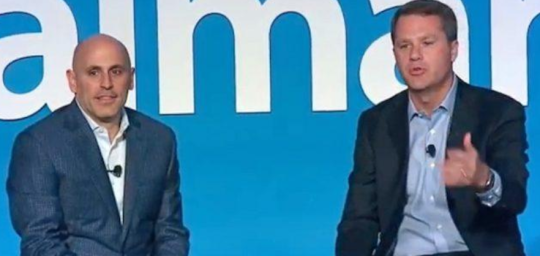
Walmart is making major changes to its
organizational structure, adapting to evolving shopper needs by integrating
various store and digital operations positions, most
notably within the supply chain.
The timing of the integration is interesting, especially
given the recent report that the
retail giant is projecting $1 billion in e-Commerce losses. The
report, from
Recode, revealed that the losses have put significant pressure on Walmart’s
e-Commerce CEO Marc Lore, and have created tension between Lore’s camp and the
Walmart Board of Directors, including CEO Doug McMillon.
The Retail TouchPoints editors share their take on
whether Walmart is making the smart move to integrate its supply chain teams,
and gives insight into what the fallout from these changes may be.
Adam Blair, Editor: Walmart’s move to bring
together the supply chain operations for both its online and store divisions
makes a lot of sense to me; after all, one of Walmart’s key strengths has been
its buying power and the efficiency of its supplier network. Why dilute that by
having separate internal organizations sourcing product for what’s often the
same eventual consumer? As has been pointed out numerous times, shoppers don’t
think ‘I’m buying from Walmart’s online division,’ they think ‘I’m
buying from Walmart.’ What’s more interesting to me, however, is whether
these executive changes and restructuring efforts are being accompanied by
changes in compensation structures — both for the top executives and those
reporting to them. If, for example, Walmart wants to pursue a strategy that
takes advantage of its vast store network to outshine Amazon in grocery
delivery (which, by the way, sounds like a great idea), the Bentonville
Behemoth had better shape everyone’s salaries, bonuses and
incentive plans to make that a reality. Otherwise, changing titles and org
charts will be just so much PowerPoint pointlessness.
Glenn Taylor, Senior Editor: There’s obviously a lot
more to Walmart’s internal power struggle than the public probably knows about,
but it’s crazy that it seemingly took a major butting of heads to really get
the company to streamline operations. I would have thought that the acquisition
of Jet.com three years ago — and the almost instant benefits
Walmart got out of it from a growth perspective — would convince the company to
integrate sooner. If anything, this whole saga has exactly pinpointed the
problem from an executive standpoint in traditional retail (and honestly, most
businesses in general). Too many people are simply unwilling to sacrifice
potential profits in the short term for a better business model in the long
term. It’s apparent looking at the Recode article that even Walmart,
which has managed to create a glimmer of real competition with Amazon, isn’t
immune to the problems that come with expensive investments. Will the new
corporate structure likely create some resentment within the ranks, especially
if profits don’t reach full potential? Sure. But I feel that at this stage, the
company’s ability to bring some of the biggest digital names into its ecosystem,
such as Jet.com’s Nate Faust and Bonobos’ Andy Dunn, will only attract
better employees that fit the company’s integration plans going ahead.
Bryan Wassel, Associate Editor: As technology brings
us towards a truly omnichannel world, there’s no reason for companies to avoid
merging their e-Commerce and brick-and-mortar supply chains whenever they can.
Large companies like Walmart have a head start when it comes to adopting true
omnichannel practices, so it makes sense that it would be one of the early
adopters of this practice. Combining both sides of the supply chain has at
least one major benefit: it removes the silo effect of handling sourcing under
two departments, a move that can be extremely valuable for larger retailers
looking to improve their agility where they can. Of course, this move will no
doubt cause friction as the backbone of the company takes on a completely new
shape, which will provide plenty of lessons to retailers catching up in the
future. Being the trailblazer is a double-edged sword — Walmart will be among
the first major retailers to reap any benefits from this setup, but it will
also be the first to run into previously unforeseen challenges.






